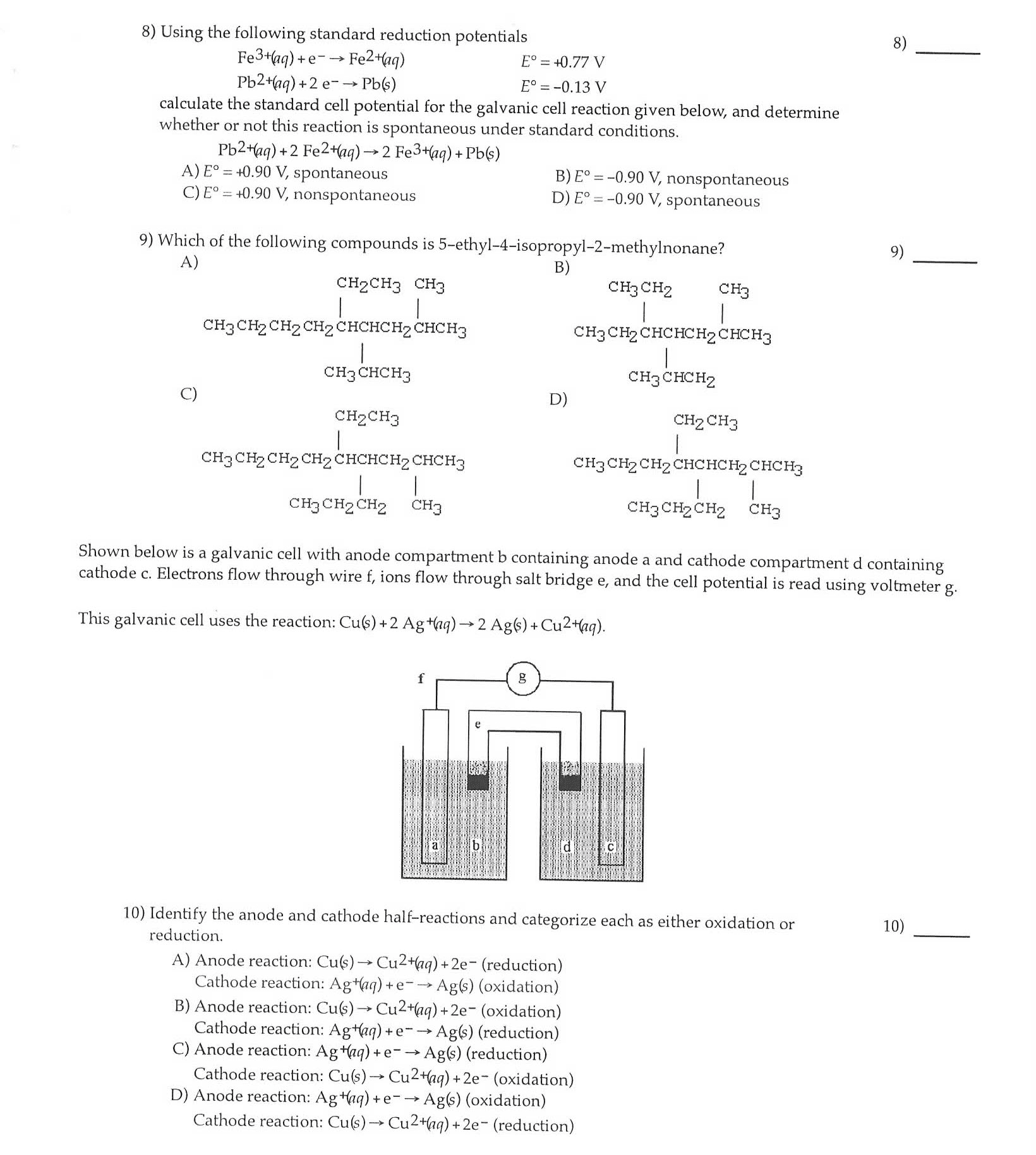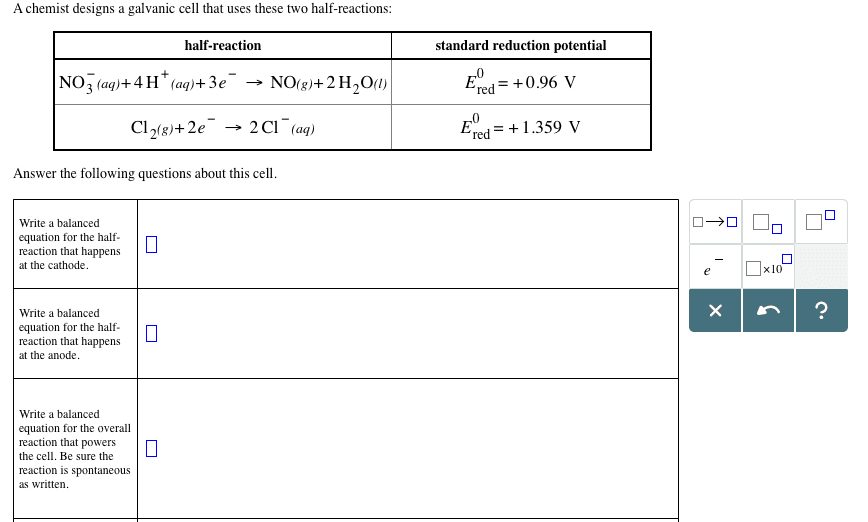CHM 132 Study Guide - Final Guide: Magnesium Chloride, Mercury Battery, Royal Aircraft Factory F.E.2
Document Summary
Electrochemistry - a branch of chemistry that deals with the exploitation of spontaneous oxidation-reduction reactions to obtain electrical energy and the use of electrical energy to drive nonspontaneous reactions important in industrial extraction of certain elements. A galvanic cell (also called voltaic cell) is a device that uses a spontaneous oxidation-reduction reaction to produce electric current. The following are some examples of spontaneous oxidation-reduction reactions: Me: cr(s) + 3agno3(aq) cr(no3)3(aq) + 3ag(s) nie: Cr(s) + 3ag+(aq) cr3+(aq) + 3ag(s) nie: mno4. Redox reactions can be broken into two half-reactions: Reduction half-reaction: cu2+(aq) + 2 e- cu(s) (aq) + 5fe2+(aq) + 8h+(aq) mn2+(aq) + 5fe3+(aq) + 4h2o(l) (aq) + 8h+(aq) + 5e- mn2+(aq) + 4h2o(l) Heat produced in an exothermic reaction is normally lost as heat. However, it can be trapped and converted into electrical energy if the reactants involved are not in direct contact with each other.




